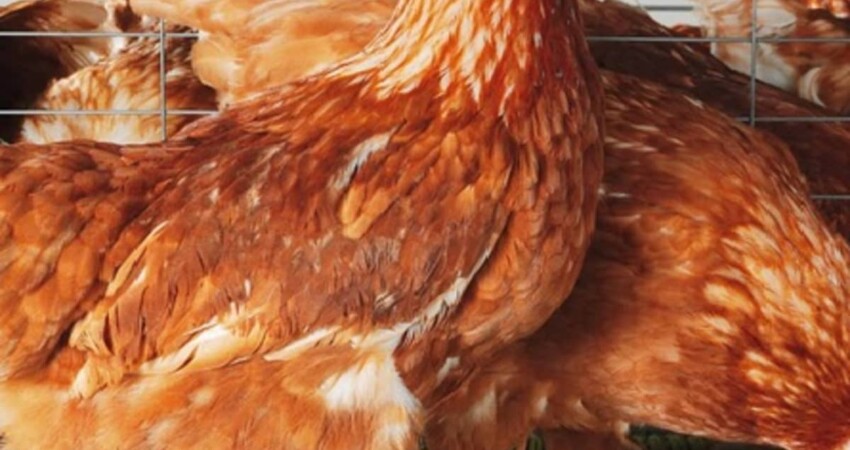

Quality egg production is the primary goal for keeping layers. It is, therefore, important to monitor production of your flock, identifying poor layers that eat into your profits with minimal or simply no benefits. During this process, you are likely to notice those birds that do not lay as much as others or those that don’t even lay at all.
Physical indicators to help you identify poor or good layers. Now, before starting to point fingers on the birds, ensure you are not the problem. Ask yourself if you are providing good quality feeds, enough light and clean water. Check also if the birds are stressed or probably there are abrupt changes in their routine. Also, assess the age of the birds because as your flock gets older, their production drops, with some even stop laying altogether.
Well, there are several physical indicators to help you identify poor or good layers.
For a good layer, the combs and wattles should be full, large, waxy, bright red and warm. A poor layer has small, scaly, pale, and shrivelled comb and wattles. This is also a sign of possible illness.
A good layer should have flexible pubic bones, wide apart to allow three fingers to fit between them while those of a poor layer are tight, quite rigid and narrow, not allowing the fingers. This wide pubic bone space normally facilitates easy passage of eggs. When you pull back the tail feathers of the bird and inspect the vent, it should be wide, oval, moist and warm for a good layer. The poor laying bird will have the vent dry, small/tight, round and cold.
The eyes of a good layer should be large, bright, prominent and sparkling. A poor layer often has small, sleepy/dull and sunken eyes. Good layers have clean-cut, strong, refined heads while poor layers have coarse, meaty/thin, blocky, weak looking head.
A good layer has an abdomen that is deep and soft, easily pliable without body fat accumulation by probing fingers while a poor layer has a hard and shallow abdomen. This depth of the abdomen is measured between the breast bone and the pubic bones.
Poor layers have dark-pigmented or dull skins, earlobes and shanks, while good layers are generally bleached or bright, though sometimes it depends on when you check them.
The bleaching is due to the diverting of yellow colour from the body portions to be deposited into the egg yolks. The loss of colour/bleaching effect is easily seen in yellow-skinned chicken on diets with sources of the coloring agents. The effect is less pronounced in white-skinned breeds, thus, more difficult to detect.
By behavior, a good layer is normally alert to her surroundings and is not lazy. The bird is active and exhibits normal chicken behavior like scratching litter and running around with others. Poor layers, on the other hand, look dull and are most of the times droopy.
Delaying culling
Molting period (when birds lose feathers) requires better understanding of the feathers. It is, thus, advisable to delay culling when a significant portion of the flock is molting, lest you remove some good laying birds. During this time, most hens stop producing eggs until molting is complete. Laying for some chicken may not be affected, but their molting may be lengthened.
Molting in good layers starts late and is quite rapid while in poor layers, it starts early and is slow, making the latter appear better groomed. The grooming does not reflect good laying, in fact, in late molters, the feathers are replaced at the same time they are lost, enabling them to return to their full production sooner.
Dirty and ragged feathers
The feathers of an active laying hen should be dirty and ragged looking. This is because they use much of their energy on producing eggs and are more prone to playing in the dirt or being followed by roosters. A hen that looks clean and perfect most of the time could be a poor layer. Be careful when dealing with pullets (young hens), lest their size makes you rule them out as poor layers.
Some good laying hens mature late, therefore, allow the pullets to mature and show characteristics suggesting their laying potential. They may develop into good layers.
Egg lay per hen is best described in a flock. A flock of good layers would have a laying percentage of over 80 per cent, then starts dropping laying after molting to about 50 per cent. On average, in a week, a hen in this flock can give about five eggs.
A poor laying flock’s lay is below 60 per cent, after molting, they hardly go above 10 per cent. In general, all the indicators will help you do away with the unproductive part of the flock, a practice known as culling. Ideally, culling should be a continuous exercise throughout the entire production period until the whole flock is productive no more.
 Contact Jaguza Support
Contact Jaguza Support